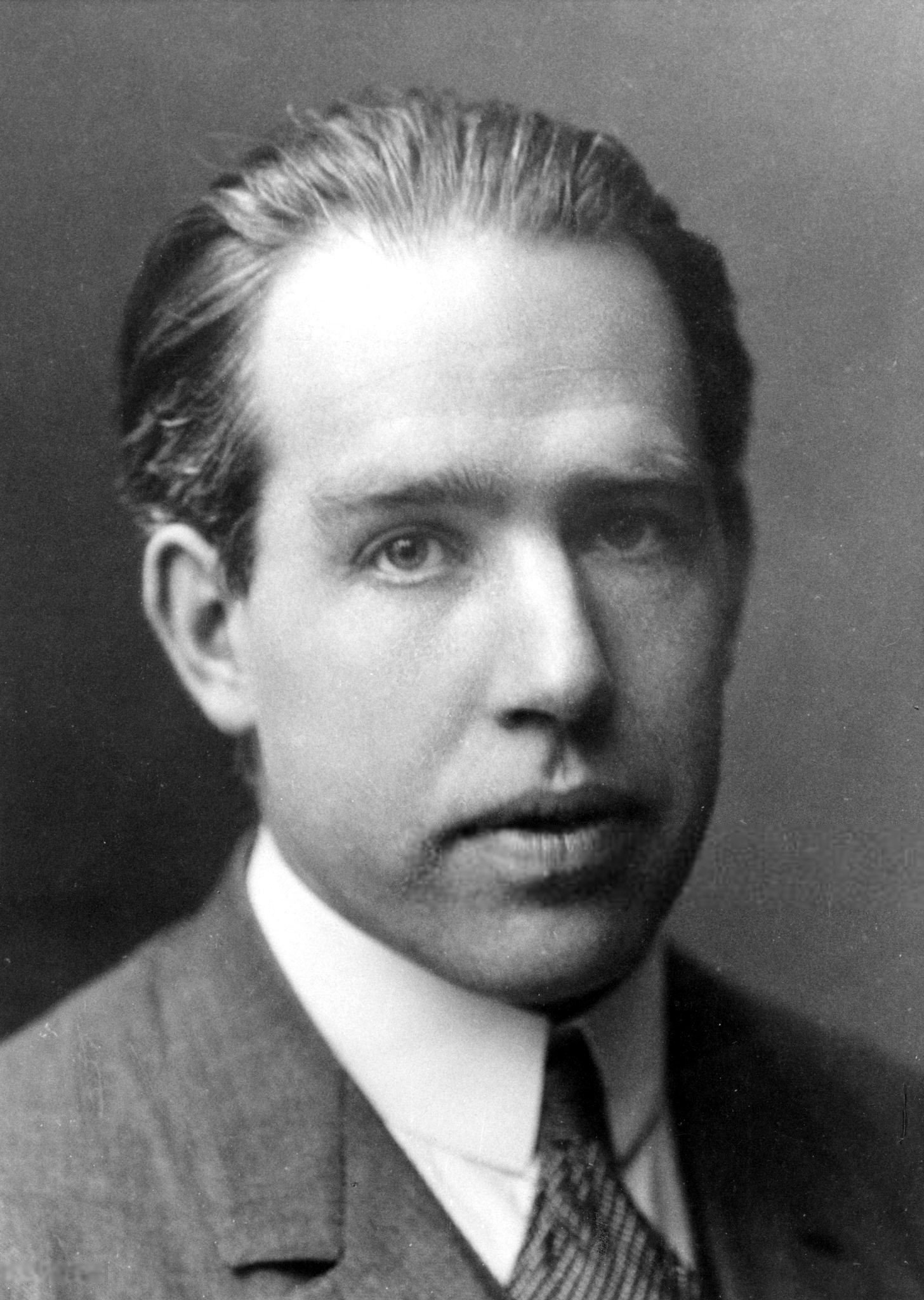"Anyone who is not dizzy after his first acquaintance with quantum of action, has not understood a word."
 |
| Niels Bohr AB Lagrelius & Westphal [Public domain] via Wikimedia |
Niels Bohr is one of the greatest scientists in history. He invented and tested theories that we still use today in science everywhere. He definitely fits the definition of a "Renaissance Man," being someone who pushes the limits of literacy, art, science and technology. Niels Bohr was born on October 7, 1885 in Copenhagen, Denmark. His parents were Ellen and Christian Bohr and he had two other siblings. In 1903 he attended the University of Copenhagen, following his father in physics. He was married to Margrethe Norlund in August of 1912 and later had six sons. While he was at the university, he studied the structure of the atom. Some theories he had were that electrons move in a set location or distance from the nucleus. They move in that order or else the entire atom would collapse. He also used that to come up with the theory of electromagnetic radiation, when an electron jumps from one orbital ring to the next.
Niels Bohr got the Nobel Prize for several things. One was the atomic model and structure in 1922 (Pfiere). He got it for his atomic bomb in 1940, too. The last thing he got the prize for was his discovery of Element 72. Element 72 is called Hafnium, which is Latin for "Copenhagen." This discovery was made when Bohr had used his atomic model to add an electron after another to create the new element ("Niels Bohr"). His theory had worked after being proved by Georgy Hevesy when he had tested it himself ("Niels Bohr"). It was proved after his speech when he got the Nobel Prize. That was given for the theorizing the subject since no one yet knew it would become an element. Bohr had worked with the periodic table before he came up with Element 72. He put in what he knew from all his work from the atom's structure into designing a new way to interpret and understand the table. All this happened in 1920 (Pfiere).Since he worked from Rutherford's models and theories, he has revised and improved them. Rutherford claimed that electrons orbiting the nucleus have zero weight ("A Science Odyssey"). He thought this was because since they were negatively charged and the protons and neutrons (the positive and neutral), would have the weight ("A Science Odyssey"). Bohr proved this to be inaccurate, knowing they would have to weigh something considering how fast they accelerate. If those electrons didn't move then the atom would fall apart. Niels Bohr invented and used the first atomic bomb in 1940, where it was built in Los Alamos (Pfiere). To create this new weapon, he used uranium isotope fission from his theory from the year before (Pfiere). This bomb was used in 1940 against Japan. He also worked off Max Planks. Max had described that atoms give off light from one of Bohr's electron theories (Matthews). Bohr proved this to be correct saying the electrons line up when they are circling the nucleus giving off light. They are shown to do this often while circling in orbitals within the atom (Matthews).
Bohr did many more things in his lifetime, such as in 1913, his atomic model was published (Pfiere). In 1936, he came up with the theory of the nucleus compound structure. In 1939, he came up with uranium isotope fission later used to design the atomic bomb in 1940 (Pfiere). In 1916, he taught physics at the University of Copenhagen. That same year he received the Chair of Theoretical Physics and founded the Niels Bohr Institute. Bohr got his master's in Physics in 1909 and doctorate in 1911 (Pfiere). All of these are now in the world of science today. Bohr died in 1962 and was 77 years old.
Bohr has revolutionized the way people see and understand science today. We see and use his inventions in science labs and classrooms all over. He has changed the way people see science and understand what they're doing. Bohr once said, "Never express yourself more clearly than you can think" ("A Science Odyssey"). He's saying that if you can't understand what you're doing, then don't do it. But if you do know what you're doing, then you're pushing the limits of science and understanding new concepts no one's thought of. Bohr is definitely a "Renaissance man," since that's exactly what he did.
Page created on 2/22/2013 12:00:00 AM
Last edited 8/23/2024 2:37:35 PM
